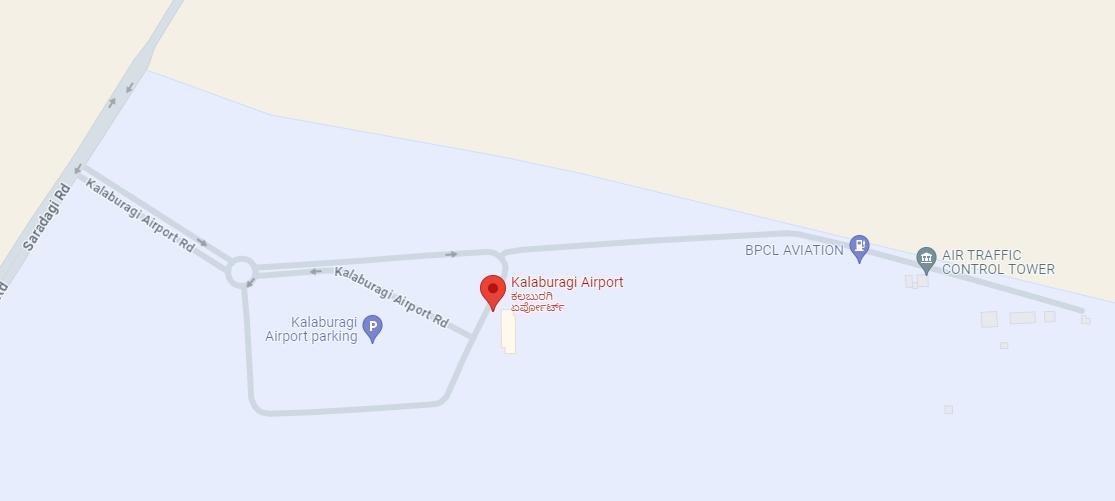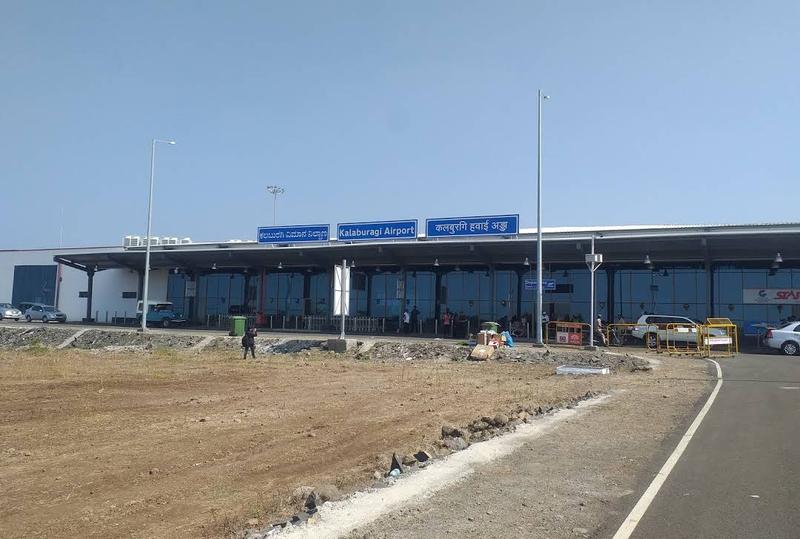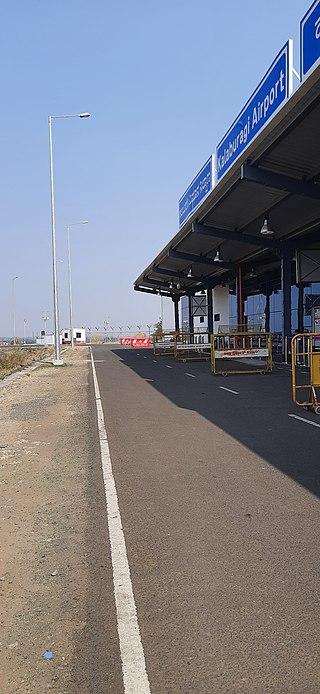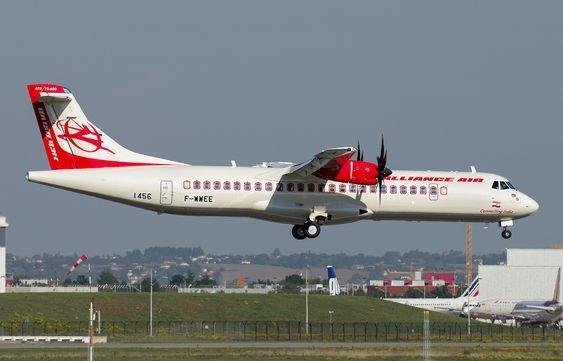



Table of Contents
- Introduction
- History and Development of Kalaburagi Airport
- Kalaburagi Airport Map
- Infrastructure and Facilities
- Current Operations in 2024
- Nearby Airports to Kalaburagi
- Economic Impact of Kalaburagi Airport
- Challenges and Future Prospects
- The Role of Kalaburagi Airport in Regional Development
- Environmental Considerations
- Connectivity and Accessibility
- Conclusion
- Faq's
Kalaburagi Airport, also known as Gulbarga Airport, is a vital infrastructure project that has significantly improved connectivity in the northern region of Karnataka. This article provides an updated and detailed overview of Kalaburagi Airport in 2024, covering its history, development, current operations, economic impact, and future prospects.
Introduction
Kalaburagi, a rapidly growing city in Karnataka, has seen substantial development over the past few years. One of the most significant milestones in this growth has been the establishment of Kalaburagi Airport. Officially inaugurated on 22 November 2019, the airport has played a pivotal role in enhancing the region's connectivity and economic growth. As of 2024, Kalaburagi Airport continues to be a cornerstone of development in the region, catering to the needs of both passengers and businesses.
History and Development of Kalaburagi Airport
Kalaburagi Airport's journey began with a strategic vision from the Karnataka government to enhance the infrastructure and economic prospects of the state's northern districts. The airport's construction was undertaken under the Public-Private Partnership (PPP) model, with the Karnataka State Industrial and Infrastructure Development Corporation (KSIIDC) at the helm. The foundation stone was laid in 2008, marking the beginning of a project aimed at transforming the region's connectivity and economic landscape.
However, the project encountered several hurdles along the way. Land acquisition issues and funding constraints caused significant delays, slowing the progress of the airport's development. Despite these challenges, the concerted efforts of the state government, along with various stakeholders, ensured the project's completion. After overcoming these obstacles, Kalaburagi Airport was finally inaugurated on November 22, 2019, marking a significant milestone in the region's development.
Event | Details |
Vision | Boost infrastructure and economic prospects of Karnataka's northern districts |
Construction Model | Public-Private Partnership (PPP) |
Lead Organization | Karnataka State Industrial and Infrastructure Development Corporation (KSIIDC) |
Foundation Stone Laid | 2008 |
Project Delays | Delays due to land acquisition issues and funding constraints |
Completion and Inauguration | Completed and inaugurated on November 22, 2019 |
Stakeholders Involved | State government and various other stakeholders worked together to overcome challenges and complete the project. |
Kalaburagi Airport Map
 Kalaburagi Airport Map, Google Maps
Kalaburagi Airport Map, Google Maps
Infrastructure and Facilities
 Kalaburagi Airport, Wiki
Kalaburagi Airport, Wiki
Kalaburagi Airport, spanning 742 acres, is equipped with a 3,100-meter-long runway capable of accommodating large aircraft like the Airbus A320. The terminal building, though modest in size, is designed with modern facilities to efficiently handle up to 200 passengers at a time. This includes essential amenities such as baggage handling systems, check-in counters, security checks, and comfortable passenger lounges, ensuring a seamless travel experience for all passengers.
In addition to its well-equipped terminal, the airport offers practical transportation solutions. The parking area can accommodate around 100 vehicles, catering to travelers who drive to the airport. For those relying on public transportation, the airport provides options like taxis and auto-rickshaws, ensuring convenient last-mile connectivity to and from various parts of the city. These features collectively enhance the accessibility and functionality of Kalaburagi Airport, making it a vital hub for regional travel.
Aspect | Details |
Total Area | 742 acres |
Runway Length | 3,100 meters |
Aircraft Accommodation | Capable of accommodating large aircraft like the Airbus A320 |
Terminal Capacity | Can handle up to 200 passengers at a time |
Key Facilities |
|
Parking Capacity | Accommodates around 100 vehicles |
Transportation Options | Taxis and auto-rickshaws for last-mile connectivity |
Current Operations in 2024
 Kalaburagi Airport Terminal Building, Wiki
Kalaburagi Airport Terminal Building, Wiki
As of 2024, Kalaburagi Airport has firmly established itself as a significant hub for regional air travel in Karnataka. Its strategic connections to major cities such as Bengaluru, Mumbai, Hyderabad, and Chennai have made it an essential gateway for residents of Kalaburagi, facilitating easier and quicker travel options. These connections have not only made travel more convenient for locals but have also played a crucial role in attracting business investments and boosting tourism in the region.
The airport currently operates daily flights to and from these major cities, with airlines like IndiGo and Alliance Air being the primary service providers. The increased frequency of these flights has made air travel more accessible and affordable, catering to the growing demand from both business and leisure travelers. The convenience and reliability of these services have enhanced the airport's reputation, making it a preferred choice for travelers in North Karnataka.
 IndiGo Airlines, Pinterest
IndiGo Airlines, Pinterest
 Alliance Air, Pinterest
Alliance Air, Pinterest
Moreover, Kalaburagi Airport has witnessed a steady rise in passenger traffic, with an impressive annual growth rate of around 15% since its inception. This consistent growth reflects the airport's expanding role in the region's transportation network and its ability to meet the increasing needs of passengers. As the airport continues to develop and attract more airlines and routes, its importance as a regional hub is expected to grow even further, contributing significantly to the economic development of Kalaburagi and its surrounding areas.
Aspect | Details |
Role in 2024 | Significant hub for regional air travel in Karnataka |
Major Connected Cities | Bengaluru, Mumbai, Hyderabad, Chennai |
Airlines | IndiGo, Alliance Air |
Flight Frequency | Daily flights to and from the connected cities |
Impact on Travel | Easier travel for residents, attraction of business and tourism to the region |
Passenger Traffic Growth | Steady increase with an annual growth rate of around 15% since inception |
Accessibility | Increased flight frequency has made air travel more accessible and affordable for the people of Kalaburagi |
Nearby Airports to Kalaburagi
Airport Name | Location | State |
Hyderabad Airport | Hyderabad | Telangana |
Goa Airport | Goa | Goa |
Pune Airport | Pune | Maharashtra |
Belgaum Airport | Belgaum | Karnataka |
Aurangabad Airport | Aurangabad | Maharashtra |
Economic Impact of Kalaburagi Airport
 Apron Area of the Airport, Wiki
Apron Area of the Airport, Wiki
The establishment of Kalaburagi Airport has significantly impacted the region's economy, acting as a catalyst for growth across various sectors. By improving connectivity, the airport has opened up new avenues for business, making Kalaburagi more accessible to investors and entrepreneurs. This increased accessibility has led to the growth of key industries such as agriculture, textiles, and manufacturing, as businesses can now efficiently transport goods and resources. Additionally, the airport has fostered the development of ancillary services, further boosting economic activity in the region.
Tourism in Kalaburagi has also benefited greatly from the airport's presence. The improved connectivity has made it easier for visitors to explore the region's rich historical and cultural attractions, such as the Gulbarga Fort and various ancient temples. The influx of tourists has spurred the growth of the hospitality and service industries, with new hotels, restaurants, and tour services emerging to cater to the needs of travelers. This, in turn, has created a ripple effect, driving demand in other sectors and contributing to the region's overall economic vitality.
 Gulbarga Fort, Wiki
Gulbarga Fort, Wiki
Real estate in Kalaburagi has seen a marked increase in demand, particularly in areas surrounding the airport. The convenience of being near a major transportation hub has attracted both residential and commercial developments, leading to the growth of new housing projects, shopping centers, and office spaces. This real estate boom has not only increased property values but also created numerous job opportunities, both directly in construction and indirectly through the demand for related services. Overall, the airport's establishment has played a pivotal role in transforming Kalaburagi into a thriving economic center.
Aspect | Details |
Business Development | Opened new avenues for business in agriculture, textiles, manufacturing, and other industries |
Tourism Growth | Boosted tourism with more visitors exploring Kalaburagi's historical and cultural attractions |
Real Estate Development | Significant increase in demand, especially near the airport with new residential and commercial developments |
Investor Accessibility | Improved connectivity has attracted more investors to the region |
Job Creation | Numerous direct and indirect job opportunities have been created due to the airport's presence |
Overall Economic Development | Contributed to the region's economic growth through enhanced connectivity and infrastructure |
Challenges and Future Prospects
Kalaburagi Airport, while a significant success story for the region, faces several challenges that need to be addressed to ensure its continued growth and efficiency. One of the most pressing issues is the need for expansion to accommodate the increasing number of passengers. As the airport gains popularity, the existing infrastructure, although currently adequate, may soon become insufficient to handle the larger aircraft and higher flight frequencies required to meet demand. Without timely upgrades, there could be bottlenecks that impact the airport's ability to serve its growing user base effectively.
Another critical challenge is improving connectivity to and from the airport. Currently, public transportation options are limited, making it difficult for passengers, especially those from more distant parts of the city or surrounding areas, to access the airport conveniently. Enhanced road infrastructure and the introduction of dedicated public transport services, such as airport shuttles or bus routes, are necessary to improve accessibility. Addressing this issue will be essential not only for passenger convenience but also for the airport's long-term viability as a regional transportation hub.
Despite these challenges, the future prospects for Kalaburagi Airport are bright. The government has ambitious plans to further develop the airport, including the construction of a cargo terminal, which would significantly boost trade and commerce in the region. Additionally, discussions are underway about introducing international flights, which would elevate Kalaburagi Airport's status and attract even more investment to the area. These developments are expected to spur economic growth, create jobs, and position Kalaburagi as a key player in Karnataka's economic landscape. With strategic planning and investment, Kalaburagi Airport is poised to become a cornerstone of the region's infrastructure for years to come.
The Role of Kalaburagi Airport in Regional Development
Kalaburagi Airport has been instrumental in transforming the landscape of North Karnataka, catalyzing the region's socio-economic development. Its establishment has not only improved connectivity but has also spurred growth in various sectors, thereby contributing significantly to the overall advancement of Kalaburagi and its neighboring districts.
1. Enhanced Access to Education, Healthcare, and Employment
- One of the most significant contributions of Kalaburagi Airport to regional development is the improved access to essential services like education, healthcare, and employment. Before the airport's inception, residents of Kalaburagi and nearby areas had to rely on road or rail travel, which was often time-consuming and inconvenient. The airport has drastically reduced travel times, making it easier for students to pursue higher education opportunities in other cities and for patients to access specialized medical care in metropolitan areas. Furthermore, the airport has opened up new job opportunities, not only within the aviation sector but also in related industries, providing a much-needed boost to local employment.
2. Growth of Ancillary Industries
- The airport has acted as a magnet for the development of ancillary industries in Kalaburagi. The hospitality industry, in particular, has seen a significant upswing. With the influx of visitors, whether they are tourists, business travelers, or individuals seeking medical treatment, there has been a surge in demand for hotels, restaurants, and other hospitality services. This demand has led to the establishment of new hotels, resorts, and dining establishments, which in turn has created more jobs and stimulated the local economy.
- Similarly, the retail sector has benefited from the increased footfall. New shopping centers, retail outlets, and local markets have emerged, catering to the needs of both residents and visitors. This growth in retail has not only provided more shopping options for the local population but has also attracted entrepreneurs and investors, further boosting the economy.
- The transportation sector has also flourished due to the airport's presence. The need for efficient last-mile connectivity has led to an increase in demand for taxis, auto-rickshaws, and rental car services. Additionally, there are plans to enhance public transportation options to the airport, which will further improve accessibility and convenience for travelers.
3. Impact on the Agricultural Sector
- Kalaburagi's economy has traditionally been agrarian, with agriculture playing a central role in the livelihoods of many residents. The airport's establishment has had a positive ripple effect on the agricultural sector by improving the logistics and transportation of agricultural produce. Farmers can now transport perishable goods like fruits, vegetables, and flowers to major markets in cities like Bengaluru, Mumbai, and Hyderabad more quickly and efficiently. This reduced transportation time not only helps in maintaining the quality of produce but also reduces costs, thereby increasing profitability for farmers.
- The improved connectivity has also attracted agro-based industries to the region. Companies involved in food processing, packaging, and distribution have set up operations in Kalaburagi, taking advantage of the airport's proximity and the availability of raw materials. This has led to the creation of additional employment opportunities and has provided farmers with better access to markets, ultimately contributing to the region's economic development.
4. Tourism and Cultural Promotion
- Kalaburagi and the surrounding areas are rich in history and culture, with several historical monuments, temples, and natural attractions. However, the region's tourism potential was previously underutilized due to poor connectivity. Kalaburagi Airport has changed this scenario by making the region more accessible to tourists from across the country.
- The airport has facilitated the growth of the tourism industry by attracting more visitors to explore the region's cultural and historical sites. The increased tourist footfall has led to the development of tourism infrastructure, including guided tours, cultural festivals, and eco-tourism initiatives. Local artisans and craftspeople have also benefited from the boost in tourism, as they now have a larger market for their products.
- The promotion of Kalaburagi as a tourist destination has not only enhanced the region's visibility but has also created new income streams for local communities, further contributing to regional development.
5. Real Estate Development
- The establishment of Kalaburagi Airport has had a profound impact on the local real estate market. The airport's presence has increased the demand for both residential and commercial properties, particularly in areas close to the airport. Developers have responded to this demand by launching new projects, including residential complexes, office spaces, and retail outlets.
- The real estate boom has been driven by several factors, including the influx of professionals working in the ancillary industries, the growth of tourism, and the overall improvement in infrastructure. The increased demand for housing and commercial space has led to rising property values, making real estate investment in Kalaburagi an attractive proposition. This growth in real estate has not only contributed to the city's economic development but has also transformed the urban landscape, with new townships and commercial hubs emerging across the region.
6. Boost to Trade and Commerce
- Kalaburagi Airport has also played a key role in boosting trade and commerce in the region. The airport has made it easier for businesses to connect with markets in other parts of India, facilitating the movement of goods and services. This has been particularly beneficial for small and medium-sized enterprises (SMEs) that rely on efficient logistics to compete in the market.
- The airport's strategic location in North Karnataka makes it an ideal hub for trade, particularly for industries involved in manufacturing, textiles, and agro-products. The increased ease of doing business has attracted more investments to the region, leading to the establishment of new industrial units and commercial enterprises. The airport's role as a trade facilitator has not only enhanced the region's economic profile but has also contributed to its integration into the larger national economy.
Also Read: Kempegowda International Airport, Bengaluru: Latest updates, Terminals, How to Reach
Environmental Considerations
Environmental sustainability has been a key focus in the development and ongoing operations of Kalaburagi Airport. Recognizing the potential environmental impact of such a major infrastructure project, the airport authorities have implemented a range of measures to minimize its ecological footprint. One of the primary initiatives is the adoption of rainwater harvesting systems, which collect and store rainwater for various uses within the airport. This not only helps in reducing the airport's reliance on external water sources but also contributes to water conservation efforts in a region where water scarcity can be an issue.
In addition to water conservation, Kalaburagi Airport has invested in renewable energy sources, particularly solar power. Solar panels have been installed in various parts of the airport to generate electricity, which is used to power lights, air conditioning, and other essential systems. This shift towards renewable energy not only reduces the airport's carbon emissions but also lowers operational costs, making it a more sustainable and economically viable facility. The use of solar energy aligns with the broader governmental initiatives to promote clean energy and reduce the carbon footprint of public infrastructure.
Waste management is another critical area where Kalaburagi Airport has made significant strides. The airport has established comprehensive waste management systems that include segregation of waste, recycling, and safe disposal of non-recyclable materials. These systems are designed to minimize the environmental impact of waste generated by the airport's operations and the thousands of passengers who pass through its terminals. As the airport continues to grow, these environmental initiatives are expected to be expanded and enhanced, ensuring that Kalaburagi Airport remains a model for sustainable development in the region.
Connectivity and Accessibility
One of the critical aspects of Kalaburagi Airport is its connectivity and accessibility, which are vital for ensuring that the airport serves its purpose as a regional hub effectively. The airport's location, approximately 15 kilometers from the city center, offers several advantages but also presents some challenges that need to be addressed to optimize its functionality.
1. Proximity to the City Center
- Kalaburagi Airport's location, just 15 kilometers away from the city center, is strategically chosen to balance accessibility with the need for space and minimal disruption to urban areas. This proximity makes the airport easily reachable for residents of Kalaburagi, whether they are traveling for business, education, or leisure. The relatively short distance also means that the airport can cater to last-minute travelers, which is a significant advantage compared to airports located farther from urban centers.
- For businesses, the airport's close location to the city is a boon, allowing quick and efficient transportation of goods and personnel. This convenience has made the airport an attractive option for companies looking to set up operations in Kalaburagi, further driving the city's economic growth.
2. Road Connectivity
- Kalaburagi Airport is currently well-connected by road, with several major roads leading directly to the airport. The existing road network allows for smooth traffic flow to and from the airport, enabling travelers to reach their destinations without significant delays. However, as the airport continues to grow in importance and passenger traffic increases, there is a pressing need to further enhance road connectivity.
- The state government has recognized this need and is considering proposals to improve the existing road infrastructure. These proposals include widening key access roads to reduce congestion during peak hours, improving signage to guide travelers more efficiently, and constructing dedicated access roads that connect the airport directly to major highways. Such improvements would not only make the airport more accessible but also reduce travel time for passengers coming from different parts of the city and neighboring towns.
3. Public Transportation Options
- While Kalaburagi Airport is currently accessible by private vehicles, taxis, and auto-rickshaws, there is a notable lack of comprehensive public transportation options. This gap in public transportation can be a barrier for some passengers, particularly those who rely on affordable and reliable transit services.
- Recognizing this challenge, the state government is exploring various options to introduce dedicated public transportation services to and from the airport. One of the proposals under consideration is the introduction of a dedicated bus service that would operate on a fixed schedule, connecting the airport with key locations in Kalaburagi, such as the city center, railway station, and bus terminals. This service would not only provide a cost-effective transportation option for passengers but also reduce the reliance on private vehicles, thereby easing traffic congestion around the airport.
- In addition to bus services, there are discussions about integrating the airport into the city's broader public transportation network. This could include extending existing bus routes to cover the airport or introducing shuttle services that operate at regular intervals. Such initiatives would greatly enhance the airport's accessibility, making it more convenient for passengers from different parts of the city and surrounding areas to reach the airport.
4. Last-Mile Connectivity
- Last-mile connectivity is a crucial factor in the overall accessibility of any airport. For Kalaburagi Airport, the availability of taxis and auto-rickshaws provides a decent level of last-mile connectivity. However, there is room for improvement to ensure that passengers can reach their final destinations without any hassle.
- One of the proposed solutions to enhance last-mile connectivity is the introduction of app-based ride-hailing services at the airport. By partnering with companies like Ola and Uber, the airport could offer passengers a convenient and modern transportation option that can be booked in advance or on arrival. This would cater to the growing demand for reliable last-mile connectivity and provide passengers with more choices based on their preferences and budgets.
- Additionally, the airport authorities are considering setting up a dedicated transportation hub within the airport premises. This hub would centralize all transportation options, including taxis, auto-rickshaws, and potential future services like shuttle buses and ride-hailing. By creating a single point of access for all transportation modes, the airport could streamline the process for passengers, making it easier for them to find and book their preferred mode of transportation.
5. Future Infrastructure Developments
- Looking ahead, the connectivity and accessibility of Kalaburagi Airport are expected to improve significantly with planned infrastructure developments. The state government's commitment to enhancing transportation links to the airport is a positive sign that the necessary investments will be made to support the airport's growth.
- Some of the future developments under consideration include the construction of a new access road that would provide a direct route from the airport to the city's main highway. This would further reduce travel times and provide an alternative route for passengers traveling to and from the airport.
- Moreover, there are discussions about establishing an intermodal transportation hub near the airport. This hub would integrate various forms of transportation, such as buses, trains, and taxis, allowing passengers to seamlessly transition from one mode of transport to another. Such a development would not only improve accessibility but also position Kalaburagi Airport as a key node in the region's transportation network.
Also Read: Indira Gandhi International (IGI) Airport Delhi: Terminals, Facilities, and More
Conclusion
Kalaburagi Airport has firmly established itself as a critical infrastructure asset for North Karnataka, significantly enhancing regional connectivity and driving economic development. Since its inception, the airport has facilitated the growth of various sectors, including business, tourism, and real estate, contributing to the overall prosperity of Kalaburagi and its surrounding areas. Its role in making the region more accessible has been pivotal in attracting investments and fostering new opportunities for the local population.
Looking ahead, the future of Kalaburagi Airport appears promising, with ongoing developments and expansion plans set to further elevate its status. As the airport continues to grow, it is poised to become an even more integral part of Karnataka's aviation network, serving as a key hub for both regional and potentially international air travel. This continued growth is expected to further stimulate economic activity, solidifying Kalaburagi's position as a thriving economic center in the state.
explore further
Latest from Editorials
More from Publications
Resources
Dwello, for every home buyer, is a way to go from 'I feel' to 'I know', at no extra cost.




